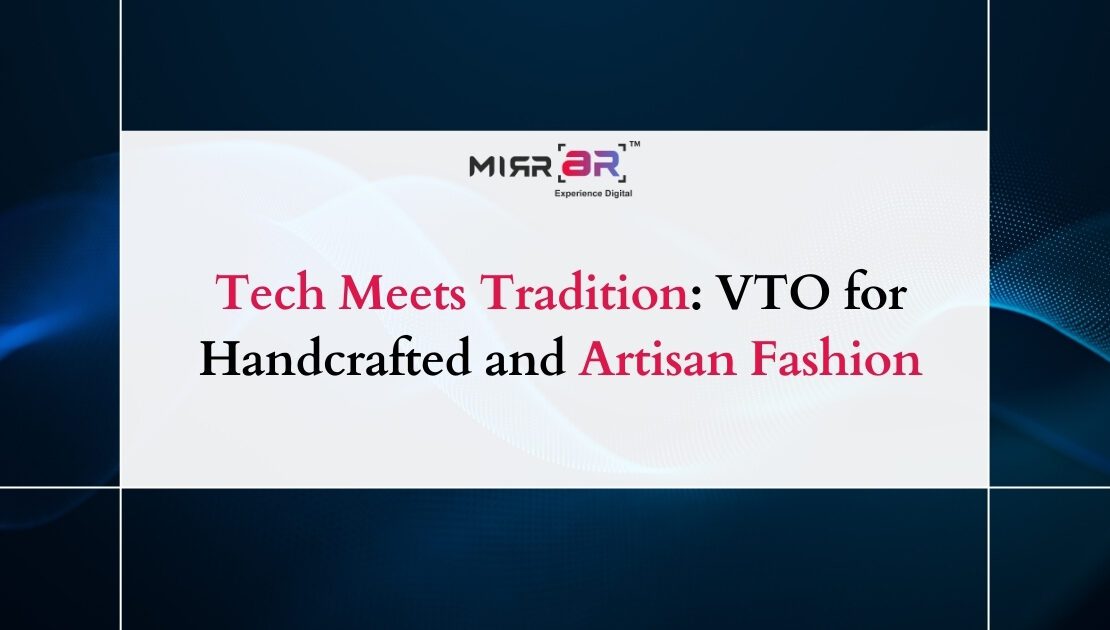
Fashion has always been a dialogue between tradition and innovation. On one side, there are the timeless crafts that artisans have passed down through generations, weaving stories into every fabric and carving meaning into every piece of jewelry. On the other, there is technology, reshaping how consumers discover, try, and buy fashion. One of the most exciting bridges between these two worlds is Virtual Try-On (VTO)—a technology that allows people to visualize handcrafted and artisan fashion pieces before making a purchase.
This blend of digital precision and artisanal authenticity is opening new doors for craftsmen, designers, and consumers alike. It honors centuries-old traditions while ensuring they thrive in the modern marketplace.
Preserving Craftsmanship in a Digital Era
Handcrafted and artisan fashion has always stood apart from mass-produced goods. Each product, whether it’s a handwoven sari, an intricately designed necklace, or a pair of handmade shoes, carries the imprint of the artisan’s skill and creativity. Yet, these creations often face challenges in competing with fast fashion and mass retail, especially in terms of accessibility and visibility.
VTO technology addresses this by creating a digital space where customers can engage with artisan products more intimately. Instead of just viewing a static picture, shoppers can see how a necklace rests against their skin tone, how a scarf drapes over their shoulders, or how earrings complement their face. This interactive experience elevates the emotional value of the craft, helping customers connect with the product before purchase—something essential for sustaining artisan traditions in the digital-first economy.
Breaking Barriers for Global Reach
Artisans, particularly those from small towns and rural regions, often find it challenging to showcase their creations beyond local markets. While e-commerce has expanded their reach, it doesn’t always capture the essence of handcrafted work. Photos can’t always do justice to the craftsmanship or the way a piece enhances an individual’s appearance.
This is where VTO plays a transformative role. A customer sitting in New York can virtually try on a handcrafted silver bangle from Jaipur or a handwoven stole from Varanasi, instantly experiencing how it looks and feels on them. By bridging physical distance, VTO democratizes access to global markets for artisans, ensuring that their traditions aren’t confined by geography. It allows customers worldwide to embrace the cultural richness of handcrafted fashion, while artisans benefit from expanded visibility and fairer opportunities.
Enhancing Customer Confidence
Purchasing handcrafted and artisan fashion is often an emotional decision. Customers want to feel that what they’re buying reflects their individuality and supports authentic craftsmanship. However, hesitation arises when shoppers are unsure how a piece will look on them in real life.
VTO removes this uncertainty. By providing a hyper-personalized, immersive shopping experience, it empowers customers to make confident choices. Whether it’s deciding if a bold hand-embroidered jacket complements their style or if a pair of gemstone earrings fits their look, VTO enhances buyer trust. This confidence leads to fewer returns, higher satisfaction, and stronger brand loyalty—critical aspects for artisan brands competing in today’s crowded fashion industry.
Celebrating Stories Behind Every Piece
What makes artisan and handcrafted fashion special is not just the product itself but the story behind it—the heritage of the craft, the hours of labor, and the community of makers who pour their hearts into it. VTO technology can serve as a storytelling platform by combining visual experiences with narratives.
Imagine trying on a hand-painted dupatta virtually, and alongside the experience, learning about the artisan community in Rajasthan that created it. Or slipping on a handcrafted ring virtually while hearing about the generational skills that shaped its design. This immersive storytelling elevates the purchase from being just transactional to transformational—it’s no longer just about wearing a piece but also about carrying its story.
Reducing Waste and Encouraging Conscious Shopping
In the age of sustainability, every step toward reducing waste matters. For handcrafted and artisan fashion, sustainability is already built into the process, with slow production methods, natural materials, and small-batch creations. VTO enhances this by minimizing the need for trial and error in shopping.
When customers can virtually try on items before buying, it reduces returns, shipping waste, and the risk of products going unused. For artisans who often invest significant time and resources in creating limited pieces, this efficiency ensures that every item finds a rightful home. It aligns tradition with modern sustainability goals, strengthening the value of handcrafted fashion in a conscious consumer era.
Creating Inclusive Experiences
Another key strength of VTO is inclusivity. Traditional fashion has often been limited in its ability to showcase how designs look across diverse body types, skin tones, and personal styles. Handcrafted fashion deserves to be celebrated by everyone, and VTO ensures that customers can see themselves represented in these creations.
Whether it’s showcasing how a handwoven saree would appear on different body frames or how a piece of handmade jewelry looks across varied skin tones, VTO breaks down barriers. It allows artisan fashion to be more inclusive and accessible, ensuring that its cultural richness resonates with a wider, more diverse audience.
The Future of Artisan Fashion in a Tech-Driven World
The marriage of Virtual Try-On and handcrafted fashion is more than just a trend; it’s a sustainable path forward. It ensures artisans are not left behind in the digital era and helps preserve traditional crafts while adapting them for the future. As consumers increasingly seek authenticity, personalization, and convenience, the combination of artisanal creativity and digital innovation offers the perfect balance.
Artisans keep culture alive through their hands, while technology amplifies their reach and relevance. Together, they form a partnership that ensures tradition doesn’t just survive but thrives in the modern fashion landscape. VTO is not replacing craftsmanship—it is empowering it, celebrating it, and giving it the global stage it truly deserves.
